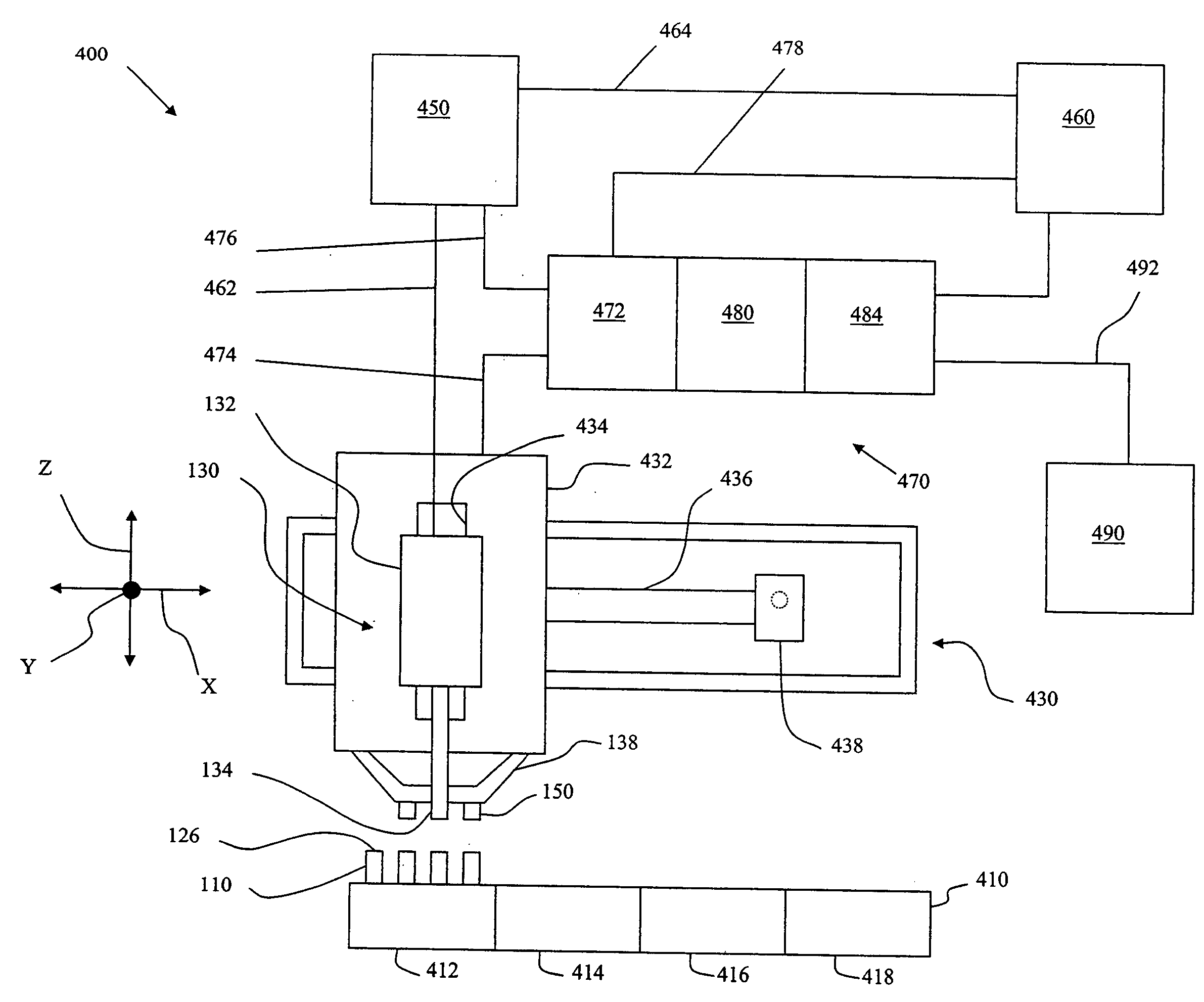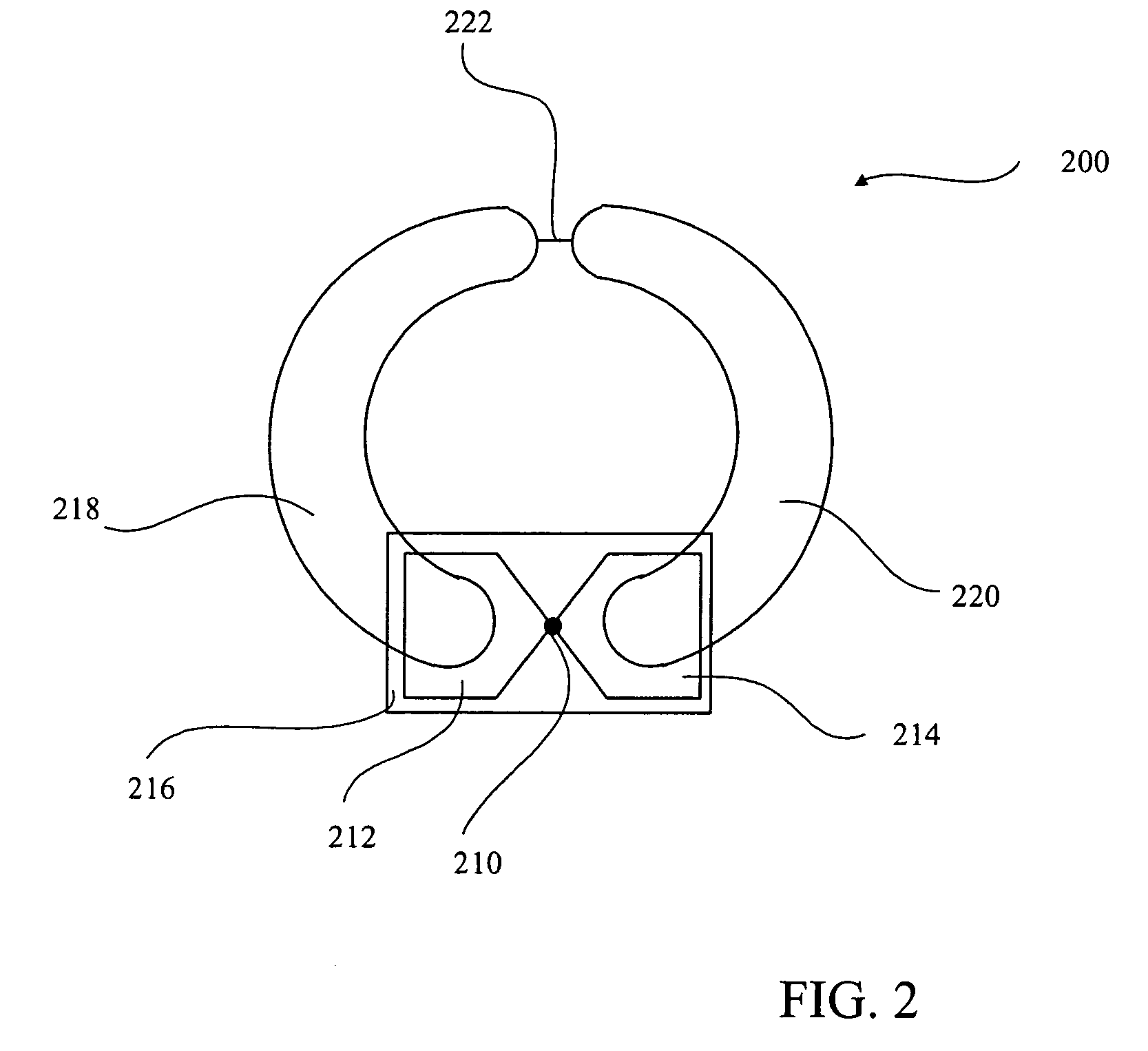Sample identification utilizing RFID tags
a sample identification and rfid technology, applied in the field of sample handling, can solve the problems of destroying the ability of the barcode scanner to accurately read the barcode, the optical path is easily modified, and the character in the barcode is not enough to adequately distinguish one given sampl
- Summary
- Abstract
- Description
- Claims
- Application Information
AI Technical Summary
Problems solved by technology
Method used
Image
Examples
Embodiment Construction
[0019] In general, the term “communicate” (for example, a first component “communicates with” or “is in communication with” a second component) is used herein to indicate a structural, functional, mechanical, electrical, optical, magnetic, ionic or fluidic relationship between two or more components or elements. As such, the fact that one component is said to communicate with a second component is not intended to exclude the possibility that additional components may be present between, and / or operatively associated or engaged with, the first and second components.
[0020] The subject matter disclosed herein generally relates to the handling of one or more individual samples as, for instance, may be performed as part of or in preparation for a sample analysis process. The subject matter provides for the unique identification of individual samples so that one sample may be readily distinguished from another sample and that once identified, the identity of the sample may be correlated ...
PUM
 Login to View More
Login to View More Abstract
Description
Claims
Application Information
 Login to View More
Login to View More - R&D
- Intellectual Property
- Life Sciences
- Materials
- Tech Scout
- Unparalleled Data Quality
- Higher Quality Content
- 60% Fewer Hallucinations
Browse by: Latest US Patents, China's latest patents, Technical Efficacy Thesaurus, Application Domain, Technology Topic, Popular Technical Reports.
© 2025 PatSnap. All rights reserved.Legal|Privacy policy|Modern Slavery Act Transparency Statement|Sitemap|About US| Contact US: help@patsnap.com



